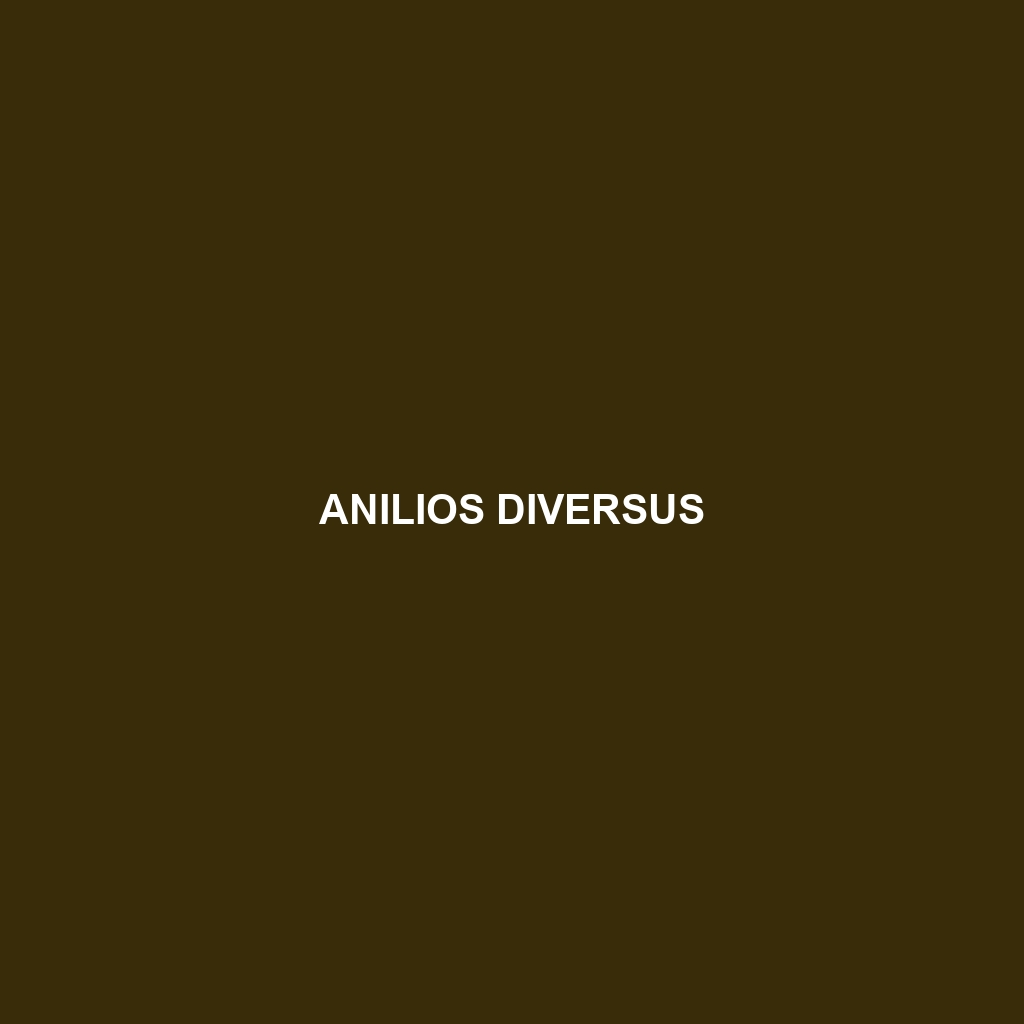Common Name: Anilios diversus
Scientific Name: Anilios diversus
Habitat:
Anilios diversus, commonly known as the diverse blind snake, is primarily found in various regions across Australia. This species predominantly inhabits arid and semi-arid environments, including grasslands and scrublands. They are often located in sandy or loose soil, which facilitates burrowing, and are particularly abundant in the eastern and central parts of the continent.
Physical Characteristics:
Anilios diversus typically grows to a length of about 50 to 60 centimeters, although some individuals may reach up to 80 centimeters. The coloration of these snakes is generally a mix of browns and creams, which provides excellent camouflage against the sandy substrates in their habitats. Their cylindrical bodies are smooth and shiny, featuring a distinctive reduced head that assists in their burrowing lifestyle. Notable features include small, inconspicuous eyes and a blunt snout, aiding their adaptation to a subterranean life.
Behavior:
This species is primarily fossorial, meaning it spends much of its life underground. Anilios diversus is a nocturnal creature, emerging after dark to hunt and explore. They exhibit cryptic behavior, often remaining motionless when threatened to avoid detection. Their unique burrowing capabilities enable them to navigate through loose soil effectively, making them less visible to predators.
Diet:
The diet of Anilios diversus primarily consists of small invertebrates, including ants and their larvae, earthworms, and other subterranean creatures. These blind snakes utilize their keen sense of smell to detect prey in the dark, utilizing a form of olfactory hunting that is typical among fossorial species. Their feeding habits are crucial for maintaining the balance of soil ecosystems and controlling invertebrate populations.
Reproduction:
Anilios diversus reproduces through ovoviviparity, with females giving birth to live young. Breeding typically occurs during the warmer months, with litters averaging 2-12 offspring. Notable behaviors during the breeding season include courtship rituals where males may engage in complex displays to attract females. The young snakes are fully formed at birth and quickly become independent.
Conservation Status:
The current conservation status of Anilios diversus is classified as “Least Concern” by the International Union for Conservation of Nature (IUCN). However, habitat destruction due to urbanization and agricultural expansion poses potential threats to their populations. Continued monitoring is essential to ensure this species remains stable.
Interesting Facts:
Anilios diversus is often referred to as a “blind snake” due to its extremely small eyes, which are not capable of seeing. Interestingly, these snakes are not truly blind; instead, they are adapted to a life spent underground, with their eyesight having become less important over time. This species also plays a role in the folklore of indigenous Australians, demonstrating a deep-rooted cultural significance.
Role in Ecosystem:
Anilios diversus plays a vital role in its ecosystem by helping to control populations of soil-dwelling invertebrates. Their presence contributes to soil aeration, while their feeding habits help regulate the abundance of certain species. Additionally, as prey for larger predators, they are an integral part of the food web, illustrating their importance in maintaining ecological balance.
